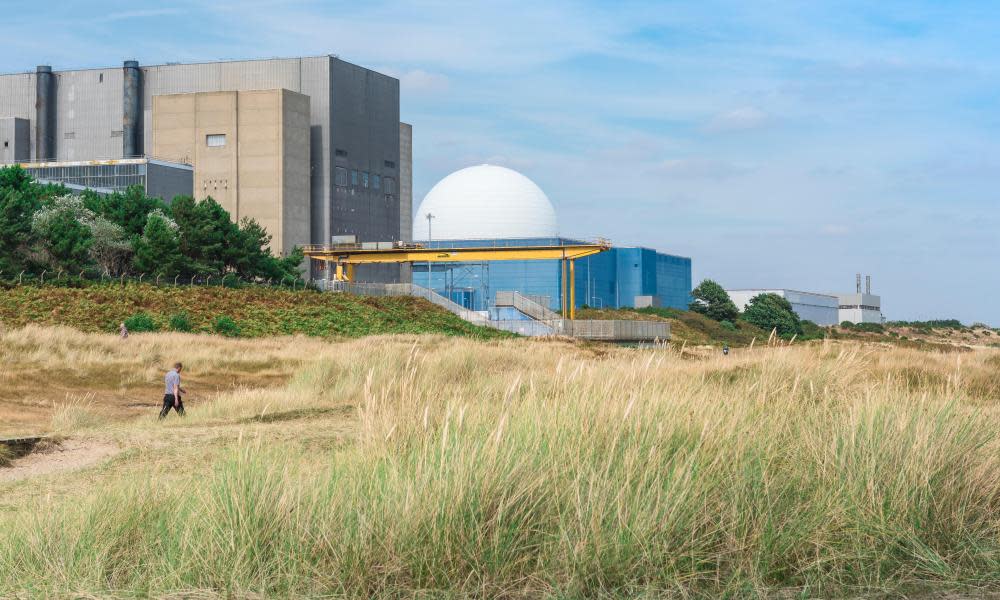What’s plan B if the government can’t attract investors willing to fund Sizewell C?

Development money for nuclear power station is an attempt to draw in investors that could replace China’s CGN
A sum of £100m is peanuts in the expensive world of nuclear power stations, so regard the business secretary Kwasi Kwarteng’s funding for a round of development work on Sizewell C as a form of advertising. The cash is intended to send a message that the government is serious about getting the plant built in Suffolk. And it is an appeal for outside investors to volunteer to sit alongside developer EDF, the French state-backed group.
There was also a definition of a desirable investor: “British pension funds, insurers and other institutional investors from like-minded countries”. Note the nationality test. It is the closest we have come to official confirmation that China General Nuclear (CGN), originally slated for a 20% stake in Sizewell, will be kicked off the project. It remains to be seen how, legally, the government will rip up the 2015 deal with CGN signed by David Cameron’s government, but the intention is clear.
So, too, is the intended funding mechanism. It will be a regulated asset base (RAB) model, a version of the formula used at Heathrow Terminal 5 and the Thames Tideway giant sewer. The key point for investors is that they will see some income before Sizewell is built, unlike at Hinkley Point C where EDF and CGN earn their princely cashflows only when the electricity starts to flow.
The switch will lower Sizewell’s lifetime costs by “more than £30bn” versus Hinkley’s contracts-for-difference model, says the government, being economical with the economics. What it doesn’t mention is that any cost overrun (a real risk given nuclear’s reliable record of never hitting its construction budgets) will be shoved on to consumers, who will in any case see £10 a year added to household energy bills during the build phase. But, yes, Kwarteng is correct that the RAB model is the only one with a chance of attracting new investors.
What, though, if those British and like-minded institutions still refuse to play? Nuclear represents unknown territory for most of them. What if competition to invest, which is meant to be the other way in which RAB lowers financing costs, doesn’t materialise? What’s the government’s plan B?
The only possible solution is for the state to invest directly. If that is so, wouldn’t it be better to run an upfront benchmarking exercise at the outset to compare the numbers? Sizewell, unfortunately, is probably inevitable given the current panic over high gas prices and long-term energy security. But taxpayers, on the hook anyway via household bills, deserve to know that the odd billion or three isn’t being diverted unnecessarily to intermediaries.
By the time Sizewell’s sums become enormous, transparency will be essential. The government has just thrown £1.7bn at Bulb, the failed energy supplier, to keep it on life support and it will be a miracle if all the cash comes back in full. In that context, using public money to invest in a productive energy asset doesn’t seem such an awful prospect.
Agnew resignation turns spotlight on UK counter-fraud strategy
Theodore Agnew’s dramatic resignation as counter-fraud minister this week has stung Rishi Sunak. So it should. “A combination of arrogance, indolence and ignorance freezes the government machine” in dealing with Covid fraud, said the outgoing minster, which is a heavy charge. Cue a series of tweets from the chancellor on Wednesday about how he is not ignoring or “writing off” the problem.
In one respect, one can sympathise with Sunak. In the early stage of the pandemic, it was indeed important to get money out of the door quickly to small businesses. Some level of fraud was inevitable. Perfection was impossible.
The question posed by Lord Agnew, though, is different. Is the government chasing the fraudsters as hard as it could? It was also the challenge set by the National Audit Office last month when it reviewed the £47bn bounceback loan scheme, which is estimated by the business department to have generated £4.9bn of fraudulent loans.
The NAO’s advice was clear: the government should produce a formal strategy for managing bounceback loan fraud; it should set targets for success; it should report on the performance of each counter-fraud measure; it should assess resources regularly. In short, inject professionalism and accountability into the process.
Is the £100m that Sunak said has been invested into the taxpayer protection taskforce enough? It is hard to tell until the government sets public targets for how much could be recouped. Until then, the suspicion will remain that fraud levels are, as Agnew put it, “a multiple of what should be happening”.

 Yahoo Movies
Yahoo Movies 
